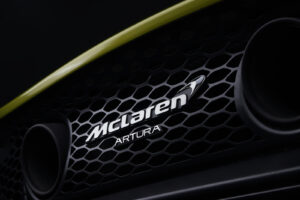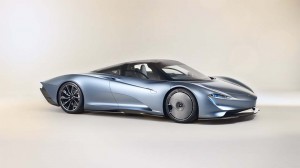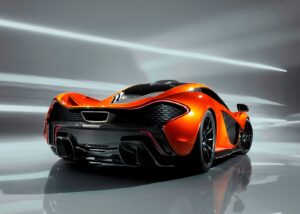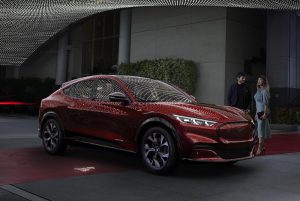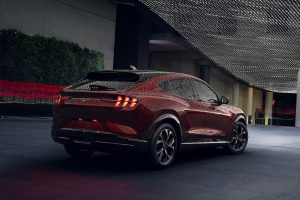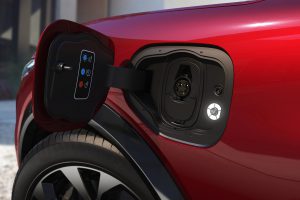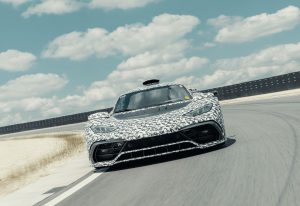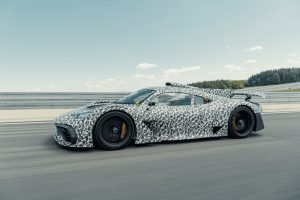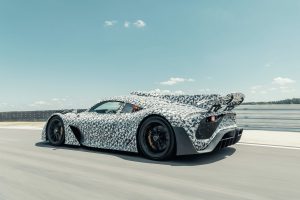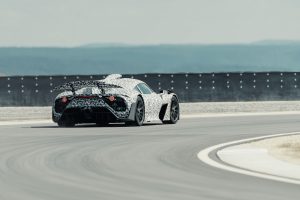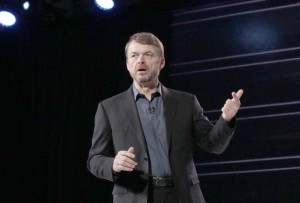
FCA CEO Mike Manley apparently will settle into a new role after the merger with PSA is complete: Head of the Americas.
Mike Manley, the CEO of Fiat Chrysler Automobiles and one of the architects of FCA’s merger with PSA Group, will take a new role as Head of the Americas once the deal is completed.
There have been numerous questions about what, if any, role the 56-year-old Manley would play after the creation of Stellantis as John Elkann, currently the chairman of FCA, will retain that post at Stellantis while PSA chief executive officer Carlos Tavares will become the new organization’s CEO. Senior officials at both of the carmakers had indicated Manley would get a new role, undefined until today.
Crediting Manley for “having led the profound transformational and exceptional development” of both the Jeep and Ram brands, while guiding FCA through “the rough terrain of the past couple of years,” Elkann announced Friday in a letter to employees that “Mike will be asked to take up the role of Head of Americas” once the merger is completed.
(FCA CEO Manley won’t be on the board after merger with PSA is completed.)

Carlos Tavares, PSA (left) and Manley shake hands following the signing of the merger agreement. Manley now has a position in the new company.
The deal, which now has cleared a number of critical hurdles, including a regulatory probe by the European Union, is expected to close sometime during the first quarter of 2021.The merger will create the world’s fourth-largest automaker by sales volume.
The British-born Manley started his career as a trainee at UK car financing firm Swan National. He subsequently spent time working on the retail side of the business at Renault and Peugeot dealerships before joining what was then DaimlerChrysler in 2000. Three years later, he was transferred to the United States.
Following the breakup of DaimlerChrysler and Chrysler’s subsequent push through bankruptcy, Manley found himself one of the key players in the tight-knit group of executives surrounding Sergio Marchionne, the architect of the automaker’s merger with Fiat.
It was as the new head of the Jeep division that Manley came into the spotlight, however. The brand’s name often was used as a synonym for SUV but, despite the surging demand for utility vehicles overall, Jeep sales remained relatively stagnant. Under Manley, the brand saw demand nearly quadruple, from around 323,000 in 2009 to 1.2 million in 2015 – the numbers reaching 1.5 million last year. Manley also was given the leadership role for truck brand Ram which has seen a surge in sales of its own.
Manley was clearly positioned as Marchionne’s top lieutenant when the two led a presentation of a new five-year plan in June 2018. But, barely a month later, Manley was elevated to the CEO spot following Marchionne’s unexpected death during surgery.
(Fiat, PSA set to get EU go-ahead to complete Stellantis merger.)
If anything, the British native continued to follow the playbook laid out by his predecessor – which included a goal of finding a new merger partner. Marchionne had, during his tenure, approached an assortment of competitors, including both Volkswagen and General Motors, repeatedly being turned down.
FCA and PSA had already established ties by the time Manley was named CEO, jointly working on several projects. And there were rumors early in 2019 that something more substantial might be in the works. Instead, that spring Fiat Chrysler announced plans to merge with PSA’s French archrival Renault. The deal was scuttled at the last minute by the French government which worried it might cause the collapse of the Renault-Nissan-Mitsubishi Alliance.
Months later, Manley confirmed that FCA was talking with its old ally PSA, whose list of brands include Peugeot and Citroen. The deal was completed in November 2019 but subsequent announcements raised questions about what, if any, role Manley would play in the soon-to-emerge company called Stellantis.
Elkann, heir to Fiat’s founding Agnelli family, was to retain his position as chairman while the CEO post would go to Tavares, a former top executive at Nissan who came in to turn struggling PSA around in 2014.
In his role heading the Stellantis unit in North, South and Central America, Manley will have a major responsibility. That will include not only steering the enterprise’s efforts to recover from the COVID-19 pandemic but also overseeing plans to bring the Peugeot brand back to the United States. It has been out of the market for nearly three decades but laid out a multi-tiered revival plan several years ago starting with its operation of a ride-sharing service based in Los Angeles.
Manley, who was set to directly address FCA employees on Friday, will not retain his current seat on the board once the Stellantis merger is completed. Elkann and Tavares will be the only executive members.
(Fiat Chrysler and PSA not exactly a “merger of equals.”)
Based on combined 2019 sales, Stellantis will immediately become the world’s fourth-largest automaker by sales volume, behind only Volkswagen, Toyota and the Renault-Nissan-Mitsubishi Alliance – but ahead of General Motors which dropped down the list after closing numerous overseas operations and selling its European Opel/Vauxhall subsidiary to PSA.


